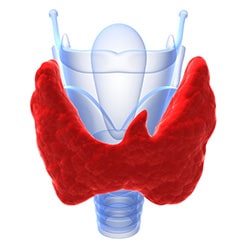Bone Cancer Treatment

Cancer is a condition that causes normally healthy cells in the body to change and grow out of control. These cells can form masses called tumors and can also move into tissues near their original location or far away, in other areas of the body.
Your bones are the support system of the body. It may seem like they are just hard objects, but bones are living and changing all the time. Bone cancer can occur in the hard outside structure or in the marrow in the center of the bone (bone marrow cancer).
Most bone cancers are caused by metastasis – cancer cells that have moved there from another cancer in the body. Cancers that move to the bones from areas like the breast , prostate or lungs are considered advanced cancers.
Types of Bone Cancer
There are many types of bone cancer, and they all vary widely in their location, growth rate and treatment. The most common types of bone cancers are:
- Sarcomas (osteosarcoma, chondrosarcoma)
- Ewing tumor
- Chordoma
- Fibrosarcoma
Bone Cancer Symptoms
Bone cancer symptoms can include typical cancer signs like weight loss and fatigue plus:
- Pain in the affected bone that starts intermittently and progresses
- Swelling in the area of pain (may take weeks to start)
- Fractures of the affected bone
- Numbness, tingling or weakness if nerves are involved
- Other symptoms may arise if cancer is in other tissues or organs
Bone Cancer Testing
Today, there is no one test designed to identify bone cancer. Because many bone cancers metastasize from other areas of the body, make sure to have your normal preventive screenings for breast or prostate cancer and report any other unusual health issues to your health provider as soon as possible.
Bone Cancer Treatment
To diagnose bone cancer, your provider will do a thorough physical exam and gather your medical history. You may also need additional tests including:
- X-rays
- MRI scans
- CT
- PET
- Blood work
The only certain way to diagnose a bone cancer is to take a sample of the tissue from the area for testing (biopsy). This may be done with a needle or an incision depending on where the cancer or tumor is located.
Once the cancer has been confirmed and your provider knows how it has spread your medical team will develop a treatment plan. Bone cancer treatment plans typically include a variety of medical experts including providers who specialize in surgery, chemotherapy, radiation and bone care for cancer patients (oncologists).
You may also see nutritionists, rehabilitation experts and many others during your care.
Treatment may include any combination of:
- Surgery
- Chemotherapy
- Radiation
- Targeted therapy
Bone Cancer Survival Rate and Prognosis
According to the American Cancer Society, bone cancers make up 0.2% of all cancers with about 3,000 new cases in 2014 and an estimated 1,400 deaths from that number. In general, bone cancer survival rate in adults and children is about 70% at five years depending on the stage in which it’s first discovered. The most common cancer in adults—chondrosarcoma has an 80% survival rate five years after diagnosis.
Bone Cancer Support
Being diagnosed with bone cancer can seem very frightening. You may already be dealing with a cancer diagnosis and have found that the cancer has moved to the bone, or this could be a new diagnosis. No matter what, make sure you talk to someone who can support you during this process.
Request additional information on bone cancer treatment, diagnosis and support: Call or contact us online.




